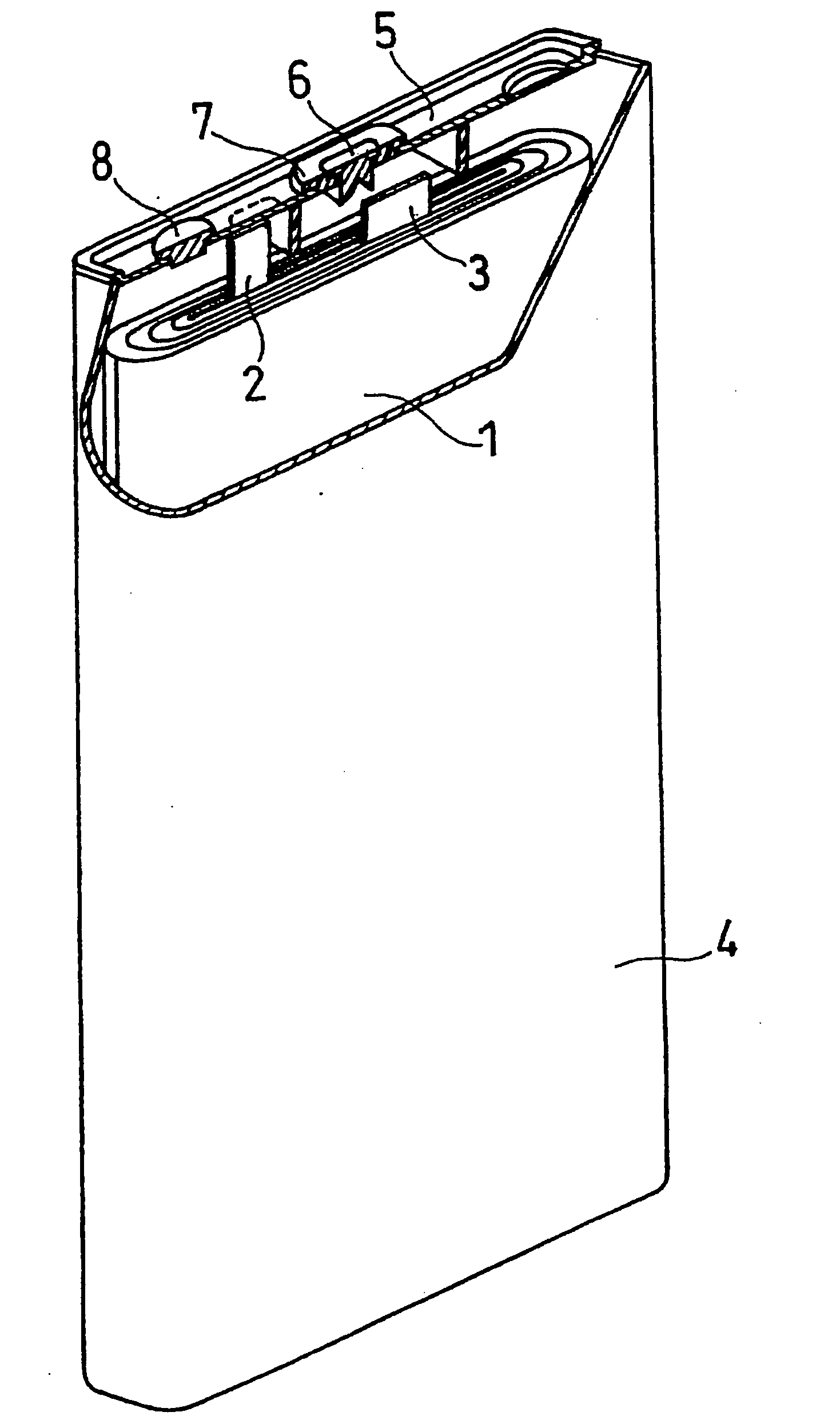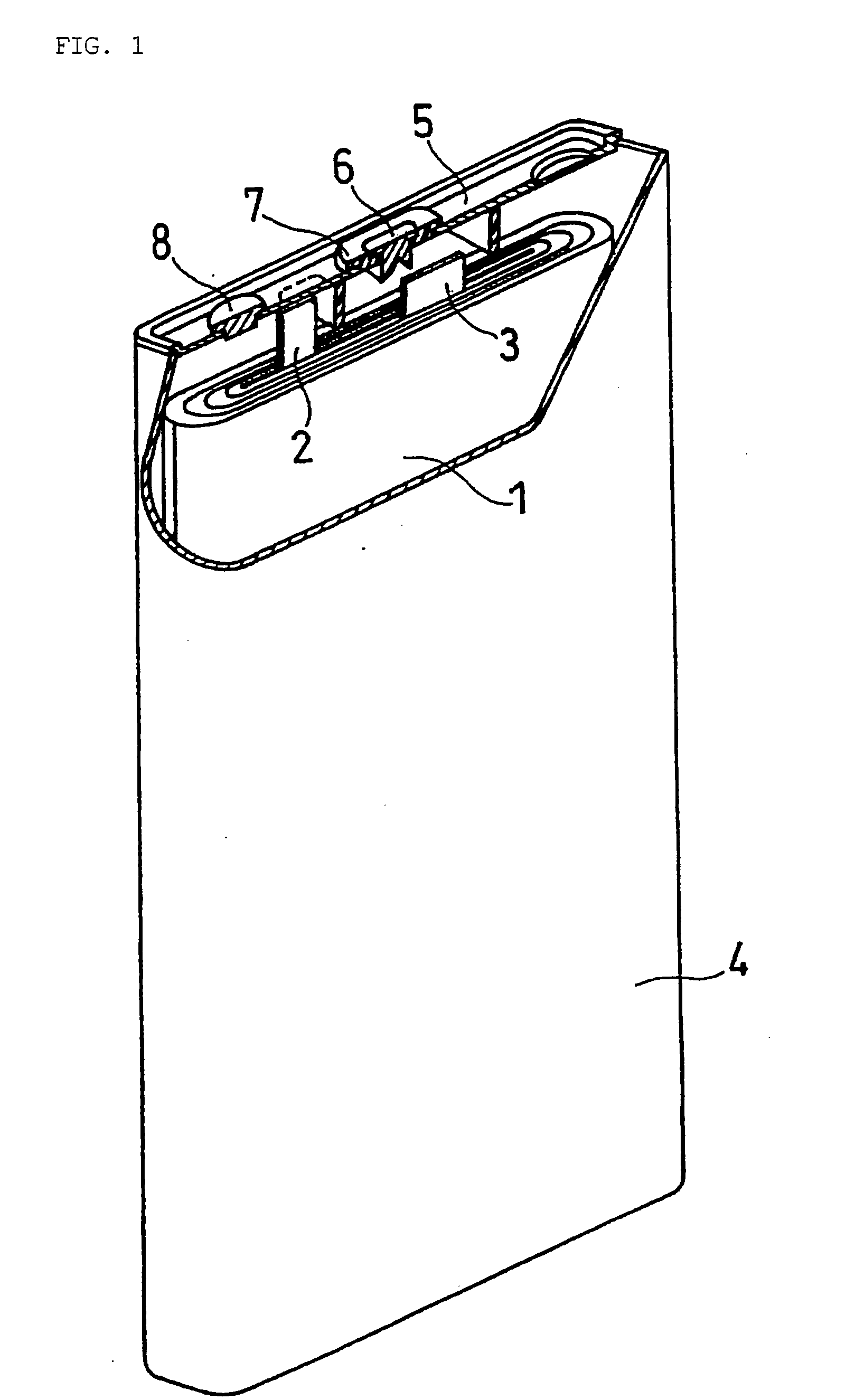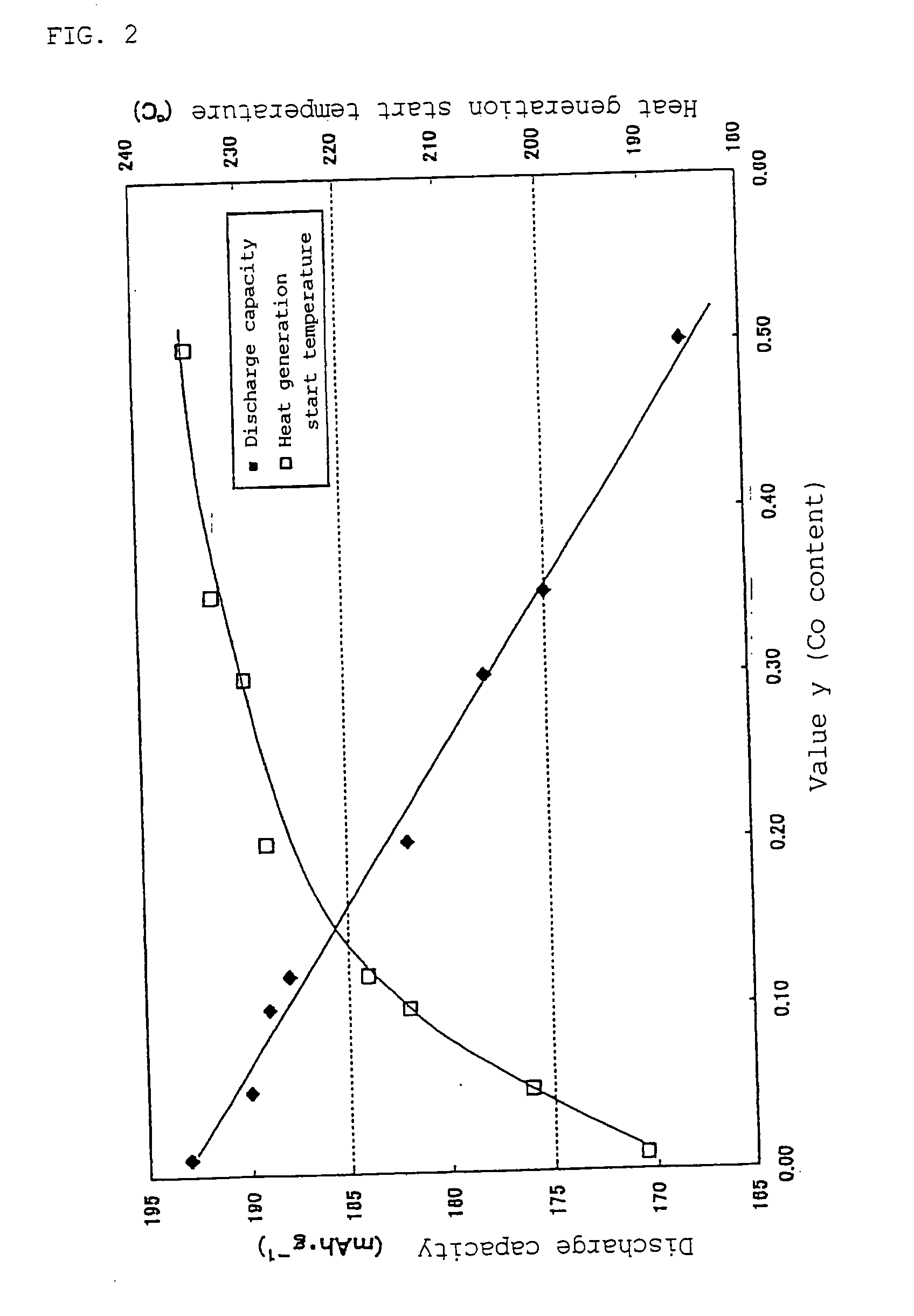Non-Aqueous Electrolyte Secondary Battery
a secondary battery, non-aqueous electrolyte technology, applied in the direction of nickel compounds, non-metal conductors, cell components, etc., can solve the problems of inability to achieve satisfactory characteristics with respect to inability to improve cycle characteristics and high-temperature storage characteristics, and inability to achieve discharge load characteristics. excellent, the crystal stability of lithium-containing composite oxide is improved, the effect of excellent discharge load characteristics
- Summary
- Abstract
- Description
- Claims
- Application Information
AI Technical Summary
Benefits of technology
Problems solved by technology
Method used
Image
Examples
example 1
[0084]Composite oxides having the compositions and physical properties Nos. 1 to 31 as shown in Tables 1 to 4 were prepared as positive electrode active materials by the following method. Using them, batteries 1 to 31 were produced.
(i) Preparation of Positive Electrode Active Material
Step a
[0085]A metal salt aqueous solution of nickel sulfate, cobalt sulfate, a salt of the element M1, and a salt of the element M2 was prepared. The concentration of nickel sulfate in the metal salt aqueous solution was set to 1 mol / L, and the concentrations of the other salts were adjusted according to Table 1.
[0086]The metal salt aqueous solution was maintained at 50° C. while being stirred. An aqueous solution containing 30% by weight of sodium hydroxide was dropped thereinto so as to achieve a pH of 12 so that a hydroxide was precipitated. The precipitate of the hydroxide was filtered, washed with water, and dried in air.
[0087]As the salt of the element M1, manganese sulfate, basic titanium sulfate...
example 2
[0102]Composite oxides were prepared in the same manner as in Example 1, except that the composition and physical properties of the positive electrode active materials were changed to those of Nos. 38 to 45 shown in Tables 7 and 8. Using them, batteries 38 to 45 were produced in the same manner as in Example 1.
TABLE 7LixNi1−y−z−v−wCoyAlzM1vM2wO2No.M1M2xyZvwv / wComp. Example38MnMg, Ca10.150.030.000050.0050.01Example39MnMg, Ca10.150.030.00010.0050.02Example40MnMg, Ca10.150.030.00050.0050.1Example41MnMg, Ca10.150.030.00150.0050.3Example42MnMg, Ca10.150.030.0150.0053Example43MnMg, Ca10.150.030.020.0054Example44MnMg, Ca10.150.030.050.00510Comp. Example45MnMg, Ca10.150.030.10.00520In the element M2, Mg:Ca = 9:1 (Atomic ratio)
TABLE 8Physical propertiesD1D2STONo.(μm)(μm)(m2 / g)(g / cm3)(%)Comp.380.5610.60.442.5198.56ExampleExample390.5710.20.462.4998.42Example400.5910.50.432.5698.36Example410.5310.40.462.5398.24Example420.5510.80.422.5098.02Example430.5810.60.472.5497.92Example440.5711.00.432.5...
example 3
[0103]Composite oxides were prepared in the same manner as in Example 1, except that the composition and physical properties of the positive electrode active materials were changed to those of Nos. 46 to 53 shown in Tables 9 and 10. Using them, batteries 46 to 53 were produced in the same manner as in Example 1.
TABLE 9LixNi1−y−z−v−wCoyAlzM1vM2wO2No.M1M2xyzvwv / wComp. Example46MnMg, Ca10.150.030.0050.00005100.00Example47MnMg, Ca10.150.030.0050.000150.00Example48MnMg, Ca10.150.030.0050.000510.00Example49MnMg, Ca10.150.030.0050.00153.33Example50MnMg, Ca10.150.030.0050.0150.33Example51MnMg, Ca10.150.030.0050.020.25Example52MnMg, Ca10.150.030.0050.050.10Comp. Example53MnMg, Ca10.150.030.0050.10.05In the element M2, Mg:Ca = 9:1 (Atomic ratio)
TABLE 10Physical propertiesD1D2STONo.(μm)(μm)(m2 / g)(g / cm3)(%)Comp.460.5410.40.422.5798.62ExampleExample470.5510.00.472.5298.47Example480.5310.60.412.6198.41Example490.5610.30.442.5698.24Example500.5210.50.432.5497.67Example510.5010.10.462.5097.43Exampl...
PUM
 Login to View More
Login to View More Abstract
Description
Claims
Application Information
 Login to View More
Login to View More - R&D
- Intellectual Property
- Life Sciences
- Materials
- Tech Scout
- Unparalleled Data Quality
- Higher Quality Content
- 60% Fewer Hallucinations
Browse by: Latest US Patents, China's latest patents, Technical Efficacy Thesaurus, Application Domain, Technology Topic, Popular Technical Reports.
© 2025 PatSnap. All rights reserved.Legal|Privacy policy|Modern Slavery Act Transparency Statement|Sitemap|About US| Contact US: help@patsnap.com



